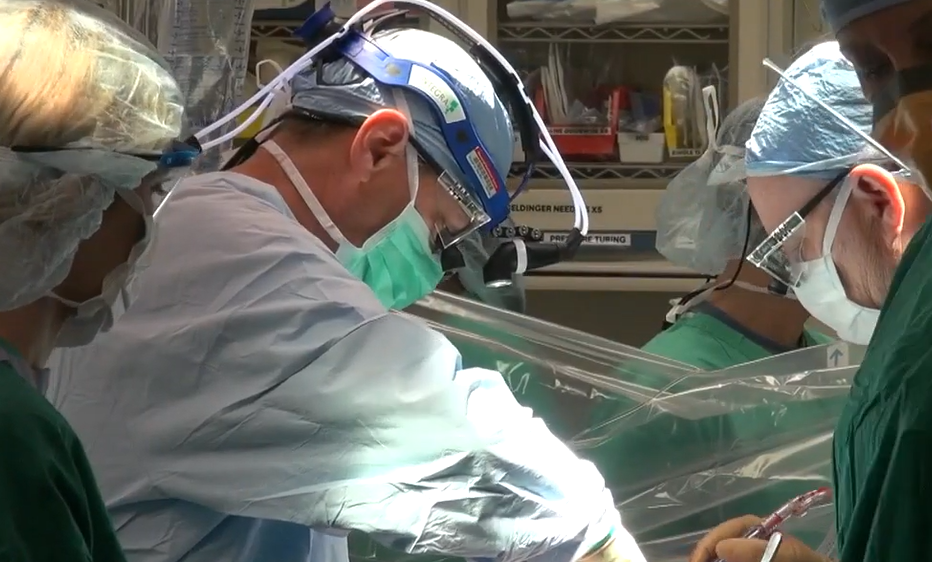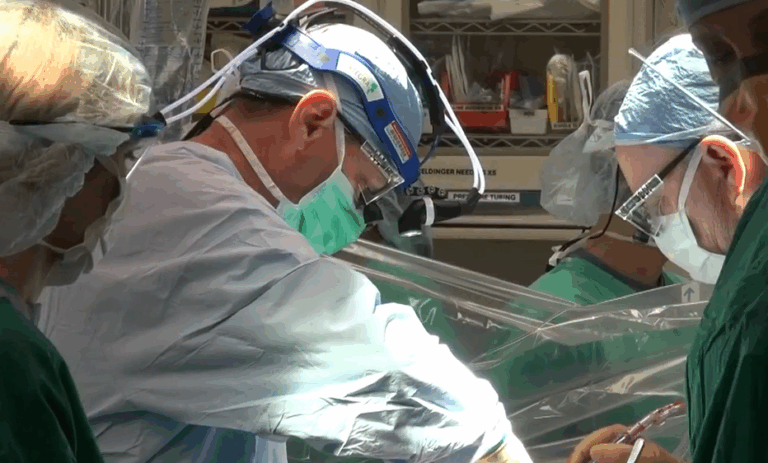The only remaining open road in your heart is a quintuple bypass when five arteries clog up like an overloaded traffic system. This surgery is a potent treatment for advanced heart disease because doctors rebuild five completely new blood vessels instead of using medication or short cuts to deal with a medical emergency. After years of undetected symptoms and increasing damage, this procedure provided a second chance for Abdul Hakeem Hasani, a retired engineer from Lahore.
Abdul had been experiencing occasional dizziness, shortness of breath when walking, and mild chest discomfort in recent months. At first, he dismissed these symptoms as “old age catching up.” He was taken to Regimen Healthcare after passing out at home, but tests showed that he had completely blocked five important coronary arteries, which was much more serious. This was a besieged heart, not merely a blocked one.
Doctors made sure his body could withstand the upcoming surgery by carefully preparing it. His body was put on a heart-lung machine under general anesthesia, which allowed the surgeons to perform precise surgery and temporarily stop the heart. After extracting veins from his chest and leg, they created new routes around the clogged arteries over the course of almost ten hours.
Patient Profile Table: Quintuple Bypass Surgery Case Study
| Attribute | Details |
|---|---|
| Name | Mr. Abdul Hakeem Hasani |
| Age | 62 years |
| Nationality | Pakistani |
| Profession | Retired civil engineer |
| Medical History | Long-term smoker, high blood pressure, elevated cholesterol |
| Diagnosis | Advanced coronary artery disease (5 major arteries blocked) |
| Surgery Date | July 12, 2024 |
| Hospital | Regimen Healthcare, Lahore |
| Surgeons Involved | Dr. Faisal Rahim and team |
| Recovery Duration | ICU: 48 hours, Full recovery: 10 weeks |
| Source | RegimenHealthcare.com |

His heart, which was now fed through five recently grafted bypasses, had a new lease on life by the time the final stitch was removed. Despite the seriousness of such surgery, the success rate is still very high, hovering around 98% when carried out by skilled teams in state-of-the-art cardiac centers. This is especially noteworthy.
Abdul stayed under close observation for the first 48 hours, with staff members and whirring monitors all around him. The most vulnerable phase of recovery is frequently the intensive care unit stay. Patients are constantly watched for infections, bleeding, and irregular heartbeats. The medical staff in Abdul’s case reported stable vitals and few post-operative complications, which is a positive beginning to a lengthy process.
Physical healing is not the only aspect of recovery. It’s also a rebalancing of emotions. It can be debilitating to wake up with a stitched chest, sore muscles, and impaired thinking. But within a week, Abdul was walking short distances with a physiotherapist, sitting up straight, and drinking soup—small but important steps toward his independence.
The real change for many patients occurs in the weeks that follow surgery rather than on the operating table. Through closely monitored cardiac rehabilitation programs, patients regain their strength, eat healthier, and develop more healthy coping mechanisms for stress. “A daily reminder of how fragile—but repairable—the human body is,” says Abdul, who is currently in his third week of rehabilitation.
Amazingly, tales like his are becoming more prevalent due to significant advancements in surgical techniques and detection, not because heart disease is disappearing. Doctors can detect issues earlier and deal with them more confidently thanks to improved pre-op screening, robotic assistance during surgery, and advanced imaging tools. However, more people are reaching the surgical threshold earlier than anticipated due to the rise in lifestyle-related risk factors, such as obesity, high-sugar diets, and smoking.
The realities of heart surgery have also been raised by public figures. Throughout his life, former US Vice President Dick Cheney had several bypasses, which helped spread knowledge about long-term care and chronic heart conditions. In a similar vein, British broadcaster Eamonn Holmes recently talked about his emotional recovery from a similar operation, emphasizing the mental and physical toll that follows.
Hospitals are under financial and logistical strain due to the demand for complicated surgeries like quintuple bypass, particularly in developing countries. Resources that are not always readily available are needed for specialized follow-up care, lengthy intensive care unit stays, and high-tech operating rooms. Thankfully, more cardiac centers are providing surgeons with the resources they need to carry out these life-saving procedures locally thanks to international health partnerships and digital training programs.
The significance of prevention is further highlighted by Abdul’s case. His arteries might never have become completely blocked if he had taken action in response to the early warning signs, which included shortness of breath, chest tightness, and persistent fatigue. This is where awareness is especially helpful. Many at-risk people can greatly lower their chance of requiring invasive procedures by adopting plant-forward diets, monitoring blood pressure and cholesterol, and scheduling regular checkups.
The prognosis is still encouraging even if surgery is required. Patients who adhere to post-operative instructions, such as lifestyle modifications and rehabilitation, have a 35% lower risk of dying within the first five years following surgery, according to recent research published in 2025. These figures show how resilient patients can be when given the proper support networks, in addition to the advancements in surgery.
Abdul still walks every day, drinks green tea with honey, and writes in his journal about his experiences. Like so many others, his story is about more than just making it through surgery. It’s about finding meaning again after a crisis. He merely responded, “It was the morning I woke up and could feel my heartbeat stronger than ever,” when asked when he realized he would be alright.


